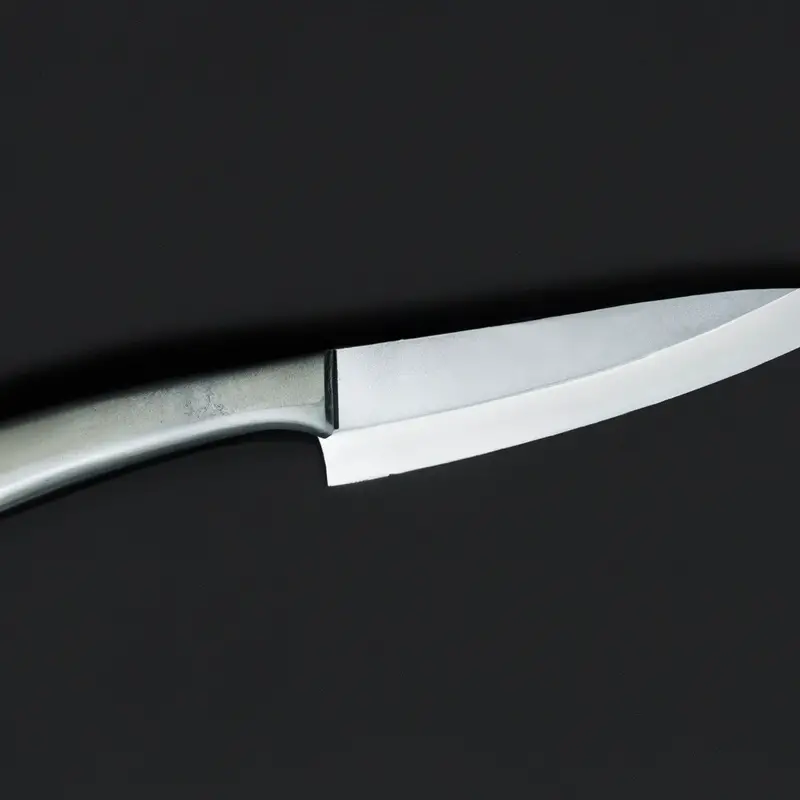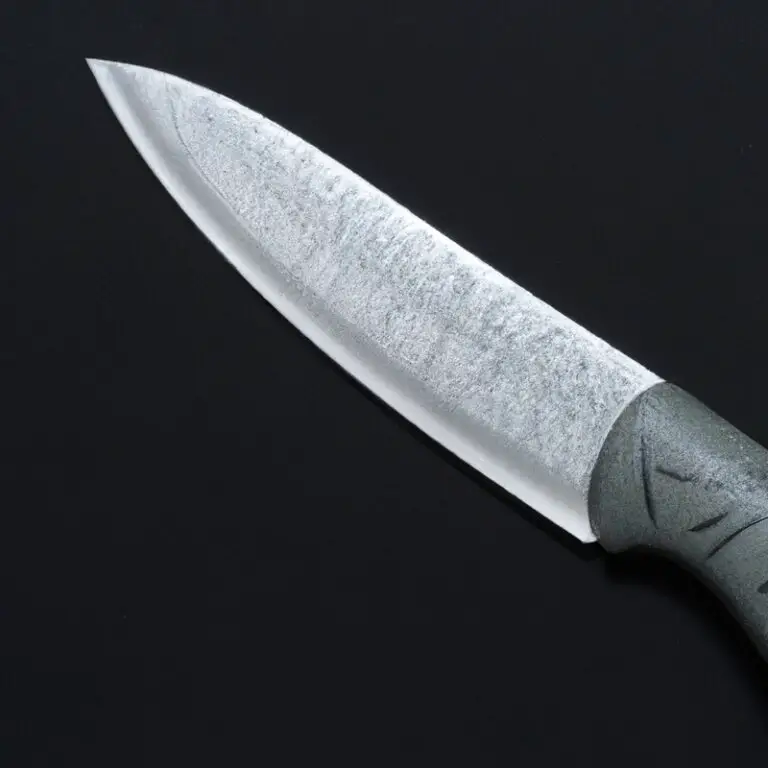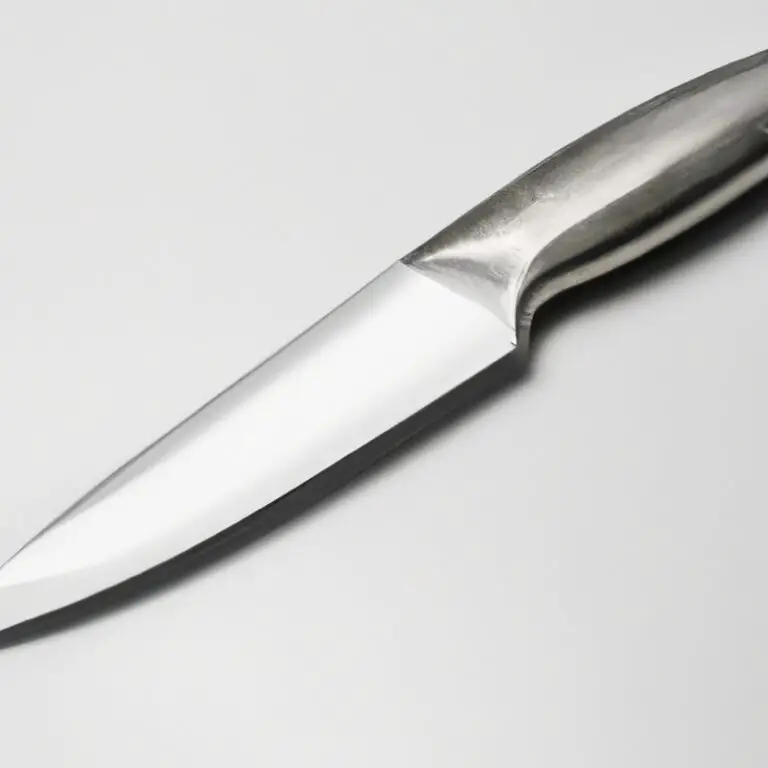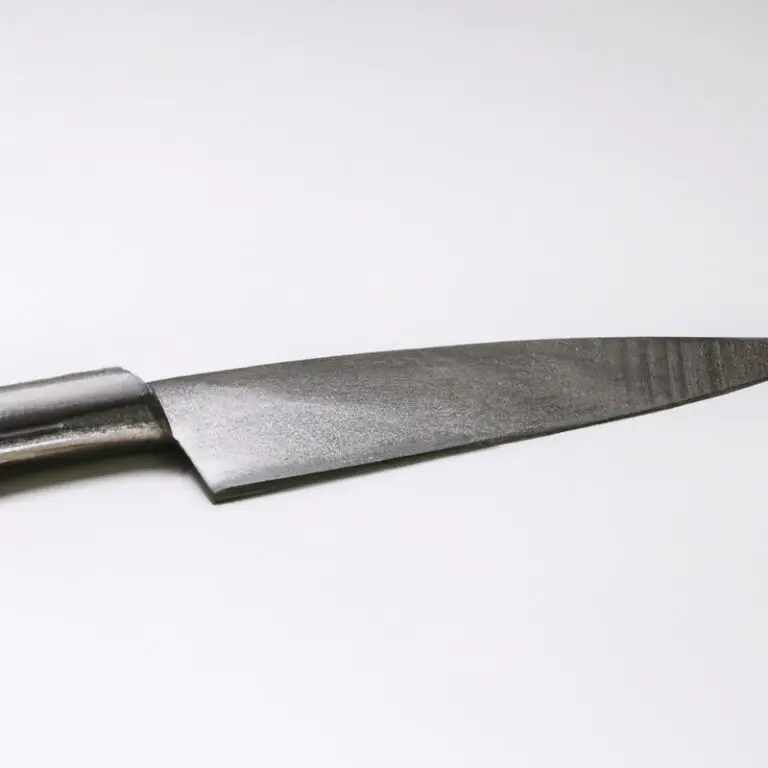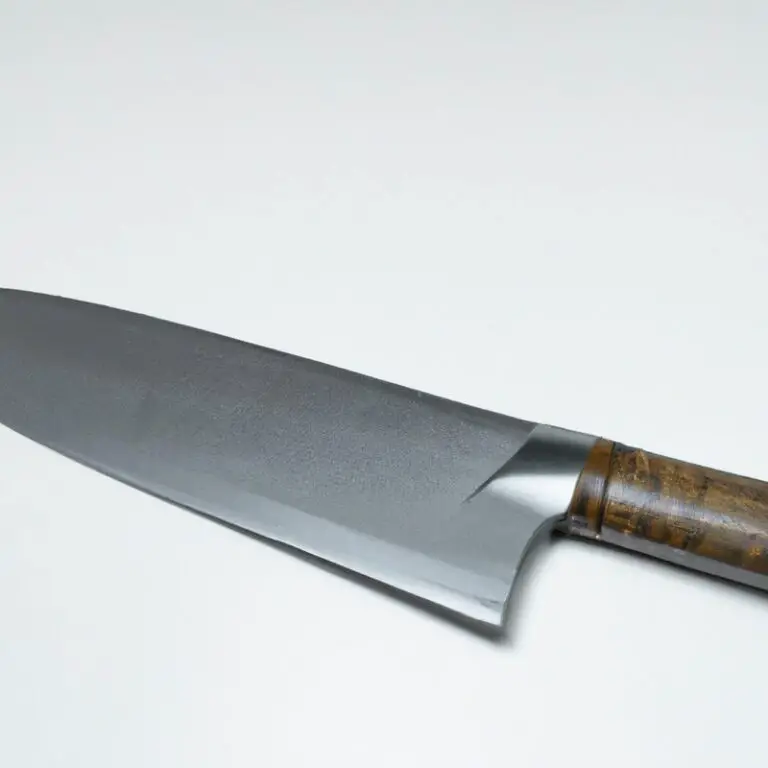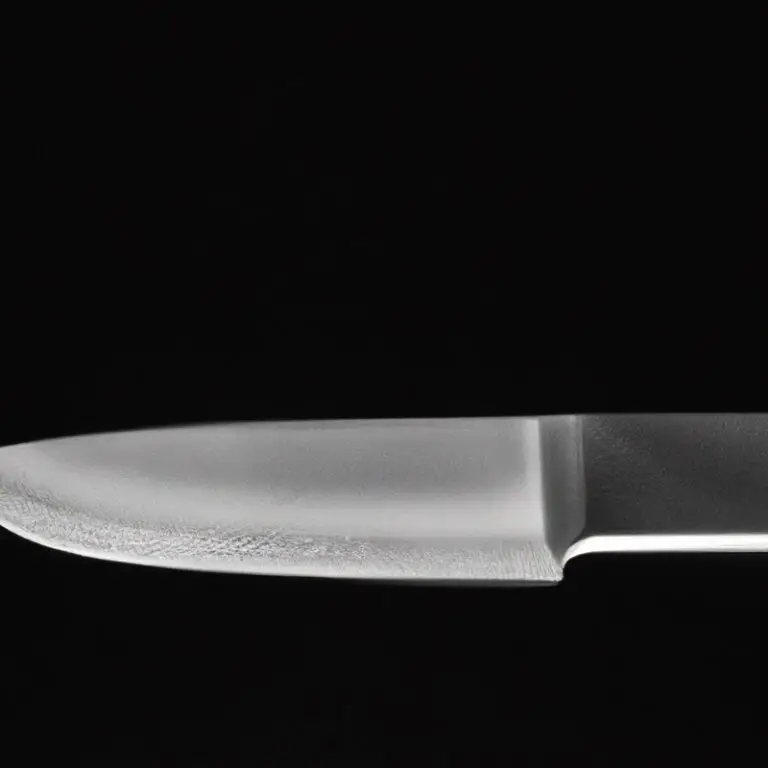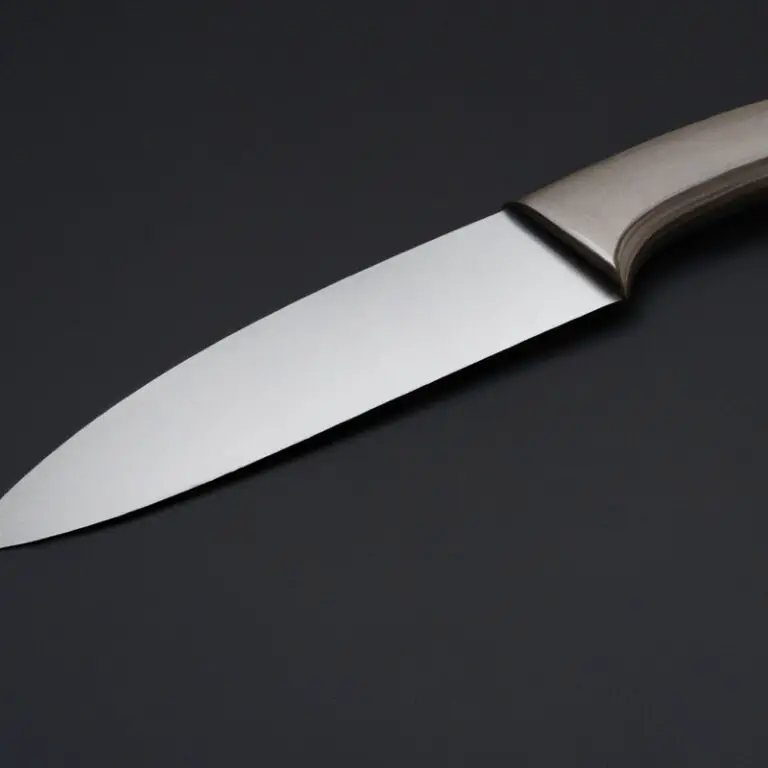What Are The Benefits Of Using a Quality Cutting Board With Gyuto Knives? Slice Like a Pro!
Key Takeaways:
- Using a quality cutting board with Gyuto knives helps to maintain the sharpness and extend the lifespan of the blades.
- It minimizes the risk of cross-contamination and food-borne illnesses due to its non-porous surface.
- A quality cutting board with Gyuto knives also provides better grip and stability, resulting in safer and more precise cuts.
- Investing in a quality cutting board and Gyuto knife will improve your overall cooking experience and elevate the quality of your dishes.
As a home cook, you may not realize how important your choice of cutting board can be for your Gyuto knife. A quality cutting board can help extend the lifespan of your knife while simultaneously enhancing its performance.
But what makes a good cutting board?
Should you choose plastic, bamboo, or hardwood? And what about maintenance?
Join me as we explore the benefits of using a quality cutting board with Gyuto knives, and learn expert tips for selecting and maintaining the best cutting board for your needs.
| Benefits of Using a Quality Cutting Board with Gyuto Knives |
|---|
| Keeps Your Knives Sharp: |
| Using a high-quality cutting board helps to maintain the sharpness of your Gyuto knife by reducing the amount of friction between the blade and the board. A softer wooden surface is ideal as it will not dull the blade as quickly as harder surfaces. |
| Reduces Risk of Contamination: |
| A quality cutting board that does not have deep cracks or crevices reduces the risk of contamination from bacteria, mold or other harmful substances. Wooden cutting boards also have natural antimicrobial properties. |
| Protects Your Countertop: |
| Using a cutting board protects your countertop from scratches and cuts that can occur when using a Gyuto knife directly on the surface. This keeps your countertop looking new and unblemished. |
| Improves Technique: |
| A cutting board can help to improve your cutting technique with a Gyuto knife. The surface of the board provides stability and traction, allowing you to make precise cuts with ease. |
| Enhances Cutting Experience: |
| Using a quality cutting board with a Gyuto knife enhances the overall cutting experience. The sensation of slicing through softwood, the sound of the blade touching the surface and the visual of perfectly cut ingredients can be very satisfying. |
The importance of choosing the right cutting board for your Gyuto knife
Selecting the right cutting board for your Gyuto knife is crucial. The wrong cutting board can cause damage to the blade, leading to reduced performance and a shorter lifespan for your knife.
It is essential to choose a cutting board that is compatible with your Gyuto knife, as different materials react differently with the blade.
Furthermore, the size and thickness of the cutting board can also affect your knife’s usage and performance. Overall, selecting a high-quality cutting board that is appropriate for your Gyuto knife is important for maintaining the blade’s condition and maximizing its potential.
How using a quality cutting board can extend the lifespan of your Gyuto knife
Using a quality cutting board can significantly extend the lifespan of your Gyuto knife. A good cutting board not only protects your knife’s blade but also ensures that it stays sharp and retains its cutting edge for a longer period.
Cutting boards made of hardwood are highly recommended as they are durable and resilient, thereby minimizing wear and tear on your Gyuto knife’s blade.
Additionally, using a cutting board that is the right size and thickness helps maintain the blade’s balance and reduces the risk of your knife accidentally slipping off the board. Overall, investing in a high-quality cutting board is an essential step in caring for your Gyuto knife and getting the most out of it.
The impact of different cutting board materials on the performance of your Gyuto knife
Different cutting board materials have varying effects on the performance of your Gyuto knife. The most recommended material for Gyuto knives is hardwood.
Cutting boards made of hardwood such as maple, walnut, or cherry provide a sturdy surface that does not blunt the blade.
The hardness of the wood also ensures that the blade does not sink too deep into the board. In contrast, plastic boards are softer than hardwood boards.
They quickly dull your Gyuto knife by repeatedly causing minor damage to its blade.
Glass cutting boards are even worse, causing serious damage to your knife’s edge. Therefore, always pick a hardwood cutting board for your Gyuto knife to ensure it remains sharp and retains its quality for a long time.
Understanding the benefits of using hardwood cutting boards with Gyuto knives
Hardwood cutting boards are the best choice for Gyuto knives due to their durability and resilience. Hardwoods such as maple, walnut, and cherry have long fibers that can withstand the sharpness of the knife’s edge without dulling it quickly.
Hardwood cutting boards also have antimicrobial properties, preventing bacteria from growing on the surface.
They are easier to clean and maintain than plastic or glass boards, and they do not damage the knife blade. Moreover, hardwood cutting boards add elegance and natural beauty to your kitchen.
Overall, investing in a high-quality hardwood cutting board can increase the lifespan of your Gyuto knife and enhance your culinary experience.
The role of cutting board maintenance in protecting your Gyuto knife’s blade
Maintaining your cutting board is crucial when it comes to protecting your Gyuto knife’s blade. Regular cleaning and oiling of your board can prevent bacteria accumulation and wood warping, which can damage your knife’s edge during slicing and chopping.
Moreover, using a damp or dirty board can cause rust and corrosion on your blade, shortening its lifespan.
To ensure optimal performance and durability of your Gyuto knife, it’s essential to maintain your cutting board properly.
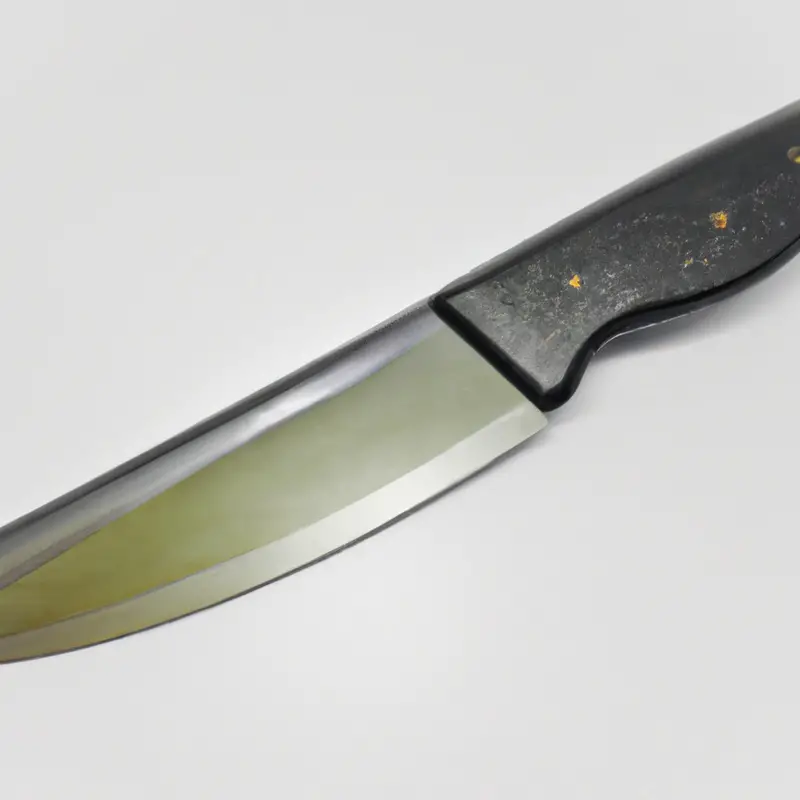
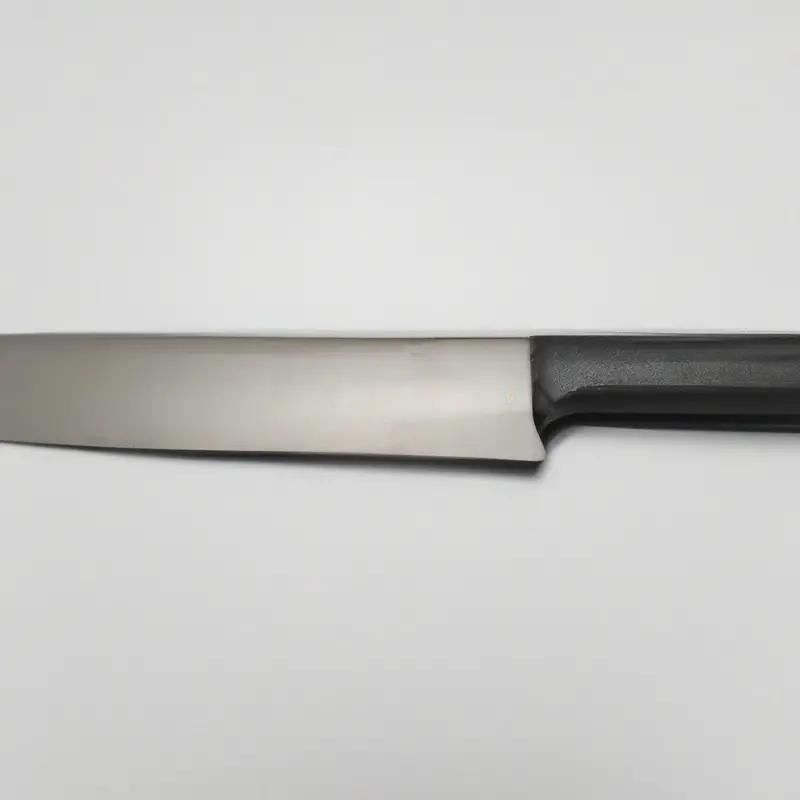
An analysis of common mistakes that can damage your Gyuto knife when using a low-quality cutting board
Using a low-quality cutting board with your Gyuto knife can be damaging and decrease the lifespan of your knife. Here are some common mistakes to avoid:
- Using a plastic or glass cutting board, which can cause your Gyuto knife to become dull quickly.
- Using a warped or uneven cutting board, which can damage the blade and make it difficult to slice and chop accurately.
- Cutting on a dirty or unsanitary cutting board, which can lead to cross-contamination and compromise the quality of your food.
- Cutting on a surface that is too hard, like a granite or marble countertop, can cause the knife to chip or break.
- Cutting with too much force or pressure can cause the blade to become dull or even chip.
By avoiding these common mistakes and investing in a quality cutting board, you can protect your Gyuto knife and ensure it performs at its best for years to come.
How cutting board size and thickness affects your Gyuto knife usage and performance
The size and thickness of your cutting board have a significant impact on your Gyuto knife’s usage and performance. A small cutting board limits your knife’s mobility and reduces your ability to make long cuts.
Smaller boards also require more frequent readjustment of your cutting angle, making your process less efficient.
A thicker board provides better durability and stability than a thin board, allowing you to make long, uninterrupted cuts. However, it’s essential to ensure that the thickness of the board doesn’t lead to a higher angle requirement, causing more arm fatigue.
Ultimately, a larger cutting board with moderate thickness is the best fit to permit a range of movements for your Gyuto knife and optimize your performance.
Exploring the impact of cutting board design on Gyuto knife slicing and chopping techniques
The design of your cutting board can significantly impact your Gyuto knife’s slicing and chopping technique. A cutting board with a smooth surface and a sturdy material can provide a stable base for your knife, resulting in clean cuts and slices.
On the other hand, a board with a rough or uneven surface may cause the knife to slip or create jagged edges on your ingredients.
In addition, the size and thickness of your cutting board can affect your performance when using a Gyuto knife. A larger board provides more space to work with, allowing for better control and precision when cutting.
Meanwhile, a thinner board can absorb the force of your knife, preventing it from bouncing around and causing accidental cuts.
When selecting a cutting board for your Gyuto knife, consider the type of material the board is made of. Hardwood boards, such as walnut or maple, are excellent choices for their durability, resistance to knife marks, and ability to protect your knife’s blade.
Bamboo boards are also a popular option due to their sustainability, hardiness, and cleanliness.
Overall, the design of your cutting board plays a vital role in your Gyuto knife’s performance. Choose a sturdy and smooth board that suits your needs and habits, and take care of it through proper maintenance.
Doing so can significantly improve your slicing and chopping skills while also extending the lifespan of your knife.
The benefit of using multiple cutting boards for different purposes with your Gyuto knife
Using multiple cutting boards for different purposes with your Gyuto knife can help you maximize the longevity of both the knife and the cutting boards themselves. Different foods have different textures and require different cutting techniques.
Using multiple cutting boards allows you to use the appropriate board for each food item, preventing cross-contamination and maintaining high hygiene standards.
For instance, using a separate cutting board for vegetables and another one for meat is a great way to avoid transferring bacteria and germs between food items. Furthermore, different cutting boards can also offer various surfaces that better support the type of cut you want to make.
For instance, a softer cutting board may be better suited for delicate cuts such as filleting fish or cutting soft vegetables like tomatoes.
Conversely, a harder cutting board may be more appropriate for chopping or cubing denser foods like root vegetables. Using multiple cutting boards can go a long way in enhancing both the performance of your Gyuto knife and the quality of your food preparation while also maintaining kitchen hygiene.
Expert tips on choosing the best cutting board for your Gyuto knife and maintaining it over time
When selecting a cutting board for your Gyuto knife, consider the following tips:
1. Choose a cutting board made of hardwood such as maple, walnut, or cherry. Avoid plastic and glass cutting boards as they can quickly dull your Gyuto knife’s blade.
2. Avoid choosing a cutting board that is too thin as it may warp or split over time. Opt for a board that is at least one inch thick.
3. Regularly clean the cutting board with warm, soapy water and dry it immediately after use to prevent bacteria growth and warping.
4. Apply oil to your cutting board every month or as needed to keep it moisturized and protected.
5. Use separate cutting boards for different food groups to prevent cross-contamination.
By following these expert tips, you can extend the lifespan of your Gyuto knife and ensure that it performs optimally for years to come.
Final Verdict
When it comes to getting the best out of your Gyuto knife, choosing the right cutting board is essential. Using a quality hardwood cutting board not only prolongs the lifespan of your knife but also improves its performance.
With this in mind, always prioritize the use of a high-quality cutting board and avoid common mistakes that can damage your knife’s blade.
Remember to match the cutting board to your Gyuto knife and its intended use, and regularly maintain it for optimal results. By implementing these tips and tricks, you can effectively protect your Gyuto knife and transform your slicing and chopping experience.
Trust us, your Gyuto knife will thank you for it.

